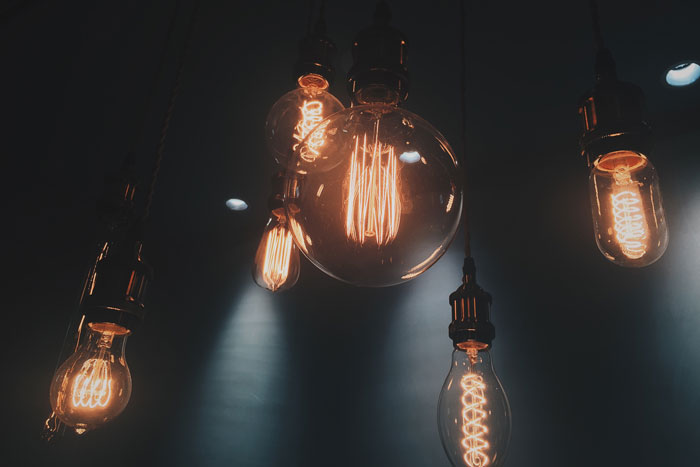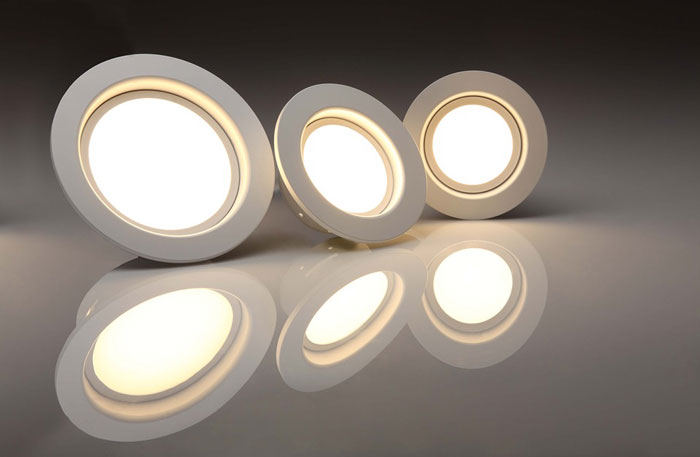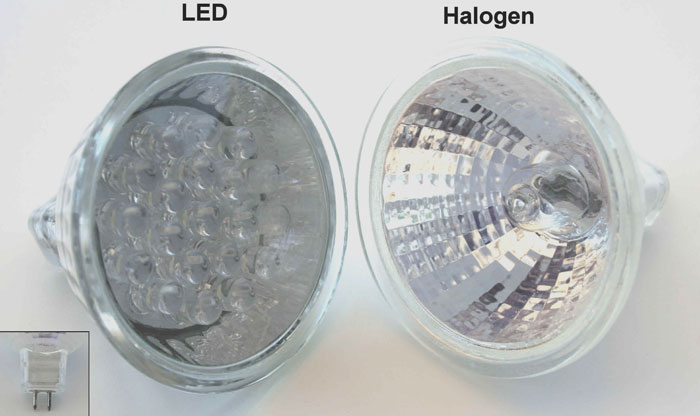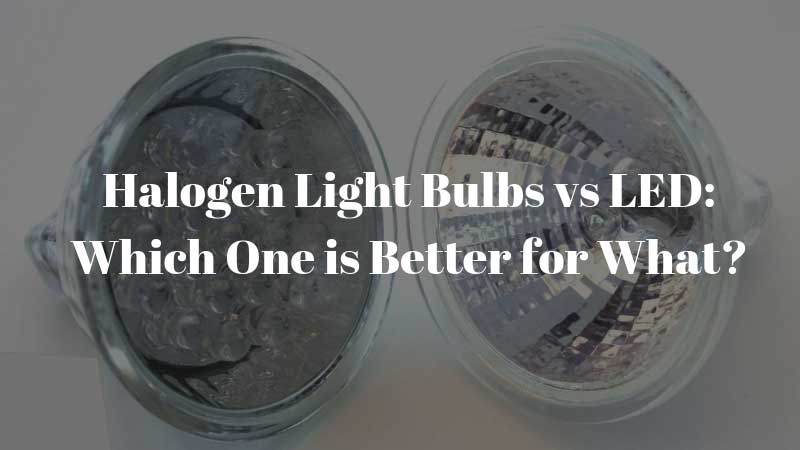Halogen Light Bulbs vs LED: Which One is Better for What?
Electricity literally brings light to darkness, and that makes it one of the greatest inventions of humanity.
There are various types of bulbs, some more modern than others. Of these, the most modern are LED light bulbs. Halogen light bulbs are less modern and far less efficient.
This article examines the various differences between halogen and LED light bulbs and their differing applications
Halogen Bulbs
Halogen light bulbs have a tungsten filament which is heated and made to glow by an electric current. This is similar to how incandescent light bulbs work. However, halogen bulbs are different because they also contain halogen gas and the filament is contained in a quartz casing not glass.

The filament in a halogen bulb burns hotter and brighter than the filament in an incandescent light bulb because the quartz envelope is able to withstand higher temperatures than the glass one of incandescent light bulbs.
Halogen light bulbs were an improvement on incandescent light bulbs. They are mostly used in motor vehicles. However, modern LED bulbs have been slowly taking over the market.
LED Bulbs
LED stands for Light-Emitting Diodes. These bulbs are the best option because they are long-lasting and energy-efficient. They are the modern solution for home and commercial lighting and are available in a wide range of sizes, types, and with varying color light output.

They operate in a completely different way from the old-fashioned incandescent bulbs and the halogen light bulbs. The mechanism involves a pair of semiconductors, one of which contains electrons and the other no electrons. A current is passed over the semiconductors, producing photons. It is the photons which give off light.
Comparison
Lifespan
Halogen bulbs are an improvement over the traditional incandescent light bulbs and at 3600 hours can last three times the lifespan of a typical incandescent bulb.
On the other hand, LED bulbs are able to last much longer: up to 50,000 hours (13 times as long as halogen bulbs). They also consume far less energy. LED bulbs use 80% less energy to produce the same amount of light you get from an incandescent bulb (and 75% less than halogen).
Safety for Home Use
Halogen bulbs are used in cars. They are not as safe as LED to use in the home because of the high temperatures at which they operate. If touched, they can cause burns.
Furthermore, they are highly sensitive to skin oils, which means that when touched they are at a a high risk of malfunctioning or bursting. That is because the oil on your skin when left on the bulb heats up when the bulb is activated and can cause the bulb to rupture.
In addition, due to the high temperature, Halogen light bulbs do not function well in cold environments.

In contrast, LED light bulbs are cooler, much more so, and this contributes to their impressive longevity. Furthermore, unlike their halogen counterparts, LED bulbs are able to function well even in cold temperatures.
In addition, LED light bulbs do not contain mercury or any harmful gases and toxins.
Power Consumption
Among all the lighting technologies, power consumption is lowest in LED light bulbs. They have 75% less consumption than halogen light bulbs and 80% less than incandescent bulbs.
This makes LED bulbs more cost-effective than halogen and incandescent light bulbs.
IR and UV Light
Halogen bulbs produce a significant amount of ultraviolet (UV) and infrared (IR) radiation, and this can damage artwork and fabrics.
On the other hand, LED bulbs produced little or no UV and IR radiation – except in the case of specifically IR or UV LEDs,
Cost
LED bulbs are more expensive than halogen light bulbs and therefore require a higher initial investment.
However, as we have noted, LED bulbs consume far less energy, and that means there are more cost-effective than halogen light bulbs over time.
Common Applications
Halogen light bulbs are most commonly used as BR, AR, PAR, and MR spotlight or flood light bulbs. They are also used in emergency lights, and for warming and brooding eggs.
LED bulbs can be used in the home. They have different color temperatures, some of which cast a gentle and warm glow which is good for the bedroom.
LED lights are also used in signs, exhibits, displays, entertainment, events, and in showcasing merchandise on showroom floors or trade shows.
Due to their low power consumption, LEDs are considered excellent alternatives for solar-powered systems.
Comparison between LED and Halogen Lights
Features | LED | Halogen |
|---|---|---|
Heat emissions | 10% – 20% of total energy | 80% – 90% of total energy |
Power consumption | 8 watts (.008 kilowatts) | 90 watts (.09 kilowatts) |
Lifespan (Hours) | 50000-60000 Hours | 800-1200 Hours |
UV emissions | None | Minimal |
Shockproof | Yes | No |
FAQs
1. What is Better LED or Halogen Lights?
LED light bulbs are vastly superior to halogen, lasting over ten times longer while consuming 85% less electricity.
5. Is it Worth Replacing Halogen with LED?
LED light bulbs are usually preferred over halogen lights because they last 10 times longer and consume up to 85% less energy. It means that you can save over 300 bucks each year on your electricity bills when you choose LED lights over halogen bulbs.
Final Verdict
Clearly, LED lights are more efficient and safer than halogen light bulbs, consume less electricity, and emit less IR and UV rays. However, halogen bulbs do have their rightful applications such as in vehicle flood lights and in emergency lights.
Halogen light bulbs are more appropriate in high temperatures and to cover a significant area using small equipment. They are better than LEDs for lighting large farming fields or playgrounds.

